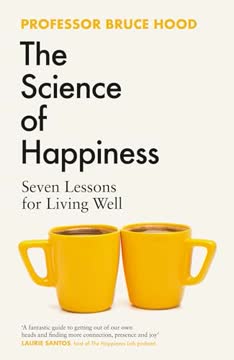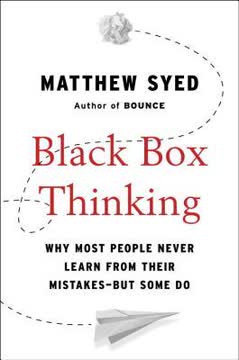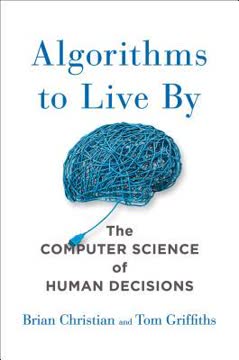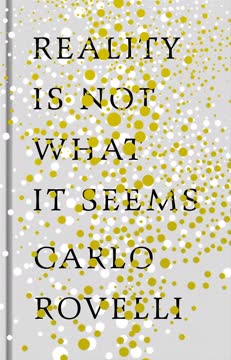Key Takeaways
1. Passion fuels extraordinary achievements
"We choose to go to the Moon in this decade and do the other things, not because they are easy, but because they are hard."
Audacious goals inspire. President John F. Kennedy's bold vision to land a man on the Moon within a decade galvanized an entire nation. This passion wasn't limited to political rhetoric; it permeated every level of NASA, from the astronauts to the youngest members of Mission Control.
Passion drives perseverance. The Apollo program faced numerous technical challenges, tight deadlines, and the ever-present risk of failure. Yet, the shared passion for space exploration kept teams working tirelessly, often sacrificing personal time and comfort. This dedication was epitomized by Flight Controller Jerry Bostick's statement: "We loved it. We loved the work, we loved the comradeship, we loved the competition, we loved the sense of doing something that was important to our fellow Americans."
To harness passion:
- Set ambitious, meaningful goals
- Connect your work to a larger purpose
- Cultivate a sense of competition or urgency
- Celebrate small wins along the way
2. Innovation thrives on challenging conventional wisdom
"If you're going to go to the Moon, sooner or later you've got to go to the Moon."
Question assumptions. The success of the Apollo program hinged on numerous technological breakthroughs, many of which required challenging established thinking. One pivotal example was John Houbolt's advocacy for the Lunar Orbit Rendezvous method, which initially faced significant resistance but ultimately proved crucial to the mission's success.
Embrace diverse perspectives. NASA's willingness to consider unconventional ideas from younger, less experienced team members often led to innovative solutions. This openness to new thinking was exemplified by the recruitment of mission controllers, many of whom were in their twenties and came from diverse backgrounds.
Strategies for fostering innovation:
- Encourage "what if" thinking
- Create an environment where all ideas are heard
- Use constraints as catalysts for creativity
- Implement regular brainstorming sessions
- Reward innovative thinking, even when it fails
3. Self-belief empowers individuals to accomplish the impossible
"We didn't know that it couldn't be done!"
Youth and inexperience can be assets. The average age of Apollo mission controllers was just 26. Their lack of preconceived notions about the impossibility of their task allowed them to approach problems with fresh eyes and unbridled optimism.
Confidence breeds competence. The Apollo team's belief in their ability to overcome challenges became a self-fulfilling prophecy. This mindset was cultivated by leaders like Chris Kraft, who entrusted young controllers with significant responsibilities and showed unwavering faith in their abilities.
Building self-belief:
- Celebrate past successes, no matter how small
- Surround yourself with supportive, positive people
- Set achievable goals to build momentum
- Practice positive self-talk
- Learn from role models who have overcome similar challenges
4. Embracing failure leads to ultimate success
"Failure is not an option."
Learn from setbacks. The tragic Apollo 1 fire, which claimed the lives of three astronauts, became a turning point for NASA. Instead of abandoning the program, they used this failure to identify and address critical safety issues, ultimately making future missions safer and more successful.
Create a culture of openness. Gene Kranz's famous "tough and competent" speech following the Apollo 1 disaster emphasized the importance of accountability and continuous improvement. This approach fostered an environment where mistakes were seen as learning opportunities rather than career-ending failures.
Strategies for embracing failure:
- Conduct thorough post-mortems after setbacks
- Encourage open reporting of errors and near-misses
- Celebrate "productive failures" that lead to important insights
- Implement systems to capture and share lessons learned
- Foster a growth mindset throughout the organization
5. Personal responsibility drives collective achievement
"It won't fail because of me."
Individual accountability matters. The success of the Apollo program relied on each team member taking full responsibility for their role, no matter how small. This attitude was encapsulated in the story of a technician who assured astronaut Ken Mattingly that his specific panel wouldn't be the reason for mission failure.
Leadership by trust. Chris Kraft's management style emphasized giving people significant responsibilities and trusting them to deliver. This approach fostered a strong sense of ownership and motivation among team members.
Cultivating personal responsibility:
- Clearly define individual roles and expectations
- Empower team members to make decisions
- Recognize and reward accountability
- Lead by example, taking responsibility for your own actions
- Create a culture where "passing the buck" is unacceptable
6. Courage to act transforms vision into reality
"If you're going to go to the Moon, sooner or later you've got to go to the Moon."
Calculated risks are necessary. The decision to send Apollo 8 to orbit the Moon was a bold move made under intense time pressure and competition from the Soviet Union. This courage to act, despite the inherent risks, proved crucial in maintaining momentum and meeting Kennedy's end-of-decade goal.
Overcome analysis paralysis. While thorough planning was essential, the Apollo program also recognized the importance of decisive action. Flight Director Glynn Lunney's quote emphasizes that at some point, you must stop planning and start doing.
Developing courage to act:
- Assess risks thoroughly, but don't let fear paralyze you
- Break big goals into smaller, actionable steps
- Set deadlines to create urgency
- Celebrate those who take smart risks, even if they fail
- Learn to differentiate between recklessness and calculated risk-taking
7. Preparedness enables swift decision-making in critical moments
"We're GO on that alarm."
Anticipate challenges. The Apollo program's success hinged on extensive preparation for every conceivable scenario. This was exemplified during the Apollo 11 landing when a series of computer alarms threatened to abort the mission. Thanks to prior simulations and Steve Bales' quick thinking, the landing proceeded successfully.
Simulate and train relentlessly. NASA's approach to training involved countless hours of simulations, often presenting controllers and astronauts with worst-case scenarios. This rigorous preparation allowed team members to make split-second decisions under extreme pressure.
Keys to effective preparation:
- Conduct regular "what-if" scenario planning
- Create detailed contingency plans
- Use simulations to test responses under stress
- Develop clear decision-making protocols
- Regularly update and refine preparation based on new information
8. Flexibility and adaptability are crucial for overcoming unforeseen challenges
"Houston, we've had a problem."
Improvise when necessary. The Apollo 13 mission demonstrated the importance of adaptability in the face of unexpected crises. The ingenious solution to the CO2 filtration problem, using materials on hand, highlights the value of flexible thinking and resourcefulness.
Maintain calm under pressure. The ability of Mission Control to quickly pivot and develop new plans during emergencies was a hallmark of the Apollo program. This adaptability was cultivated through extensive training and a culture that valued creative problem-solving.
Fostering adaptability:
- Encourage cross-training to broaden skill sets
- Practice problem-solving with limited resources
- Develop a "plan B" (and C, D, E) mentality
- Reward creative solutions to unexpected challenges
- Build diverse teams to bring varied perspectives to problem-solving
Last updated:
FAQ
1. What is Moonshot: What Landing a Man on the Moon Teaches Us About Collaboration, Creativity, and the Mind-set for Success by Richard Wiseman about?
- Psychology of Apollo success: The book explores the psychological principles behind the Apollo Moon landings, focusing on how collaboration, creativity, and mindset enabled the achievement.
- Ordinary people, extraordinary results: It highlights how young, modestly educated mission controllers accomplished the extraordinary through teamwork and determination.
- Practical and historical blend: Wiseman combines historical accounts with psychological insights, offering readers actionable lessons for their own goals.
2. Why should I read Moonshot by Richard Wiseman?
- Unique history-meets-psychology approach: The book provides a behind-the-scenes look at the Apollo missions while unpacking the psychological traits that made them successful.
- Actionable strategies for success: Readers gain access to scientifically backed habits and mindsets to improve productivity, creativity, and resilience.
- Inspiration from real people: The story demonstrates how ordinary individuals achieved greatness, motivating readers to believe in their own potential.
3. What are the key takeaways and psychological principles from Moonshot by Richard Wiseman?
- Eight core principles: Passion, innovation, self-belief, learning from failure, responsibility, courage, preparedness, and flexibility are identified as the foundations of success.
- Universal application: These principles are presented as lessons that can be applied beyond space exploration to personal and professional challenges.
- Practical exercises: Wiseman offers techniques such as mental rehearsal, premortems, and exposure therapy to help readers develop these mindsets.
4. How does Moonshot by Richard Wiseman explain the role of passion and purpose in achieving big goals?
- Grand goals fuel motivation: Having a dramatic, meaningful objective—like Kennedy’s Moon challenge—energizes individuals and teams.
- Purpose sustains effort: Connecting work to a greater good or societal benefit increases perseverance and commitment.
- Techniques to harness passion: The book provides reflective questions and suggests creating “stretch goals” to reignite enthusiasm.
5. What does Moonshot by Richard Wiseman say about creativity and overcoming mental blocks?
- Einstellung effect explained: Prior knowledge can blind people to better solutions, as seen in NASA’s initial resistance to the lunar orbit rendezvous plan.
- Creativity exercises: Wiseman encourages resisting first ideas, using “vice versa thinking,” and embracing constraints to spark innovation.
- Incubation and relaxation: Taking breaks and allowing unconscious thought can lead to creative breakthroughs.
6. How does Moonshot by Richard Wiseman address self-belief and the growth mindset?
- Self-efficacy matters: Belief in one’s ability to succeed increases effort and persistence, turning optimism into a self-fulfilling prophecy.
- Small wins build confidence: Breaking big goals into manageable steps helps maintain motivation and momentum.
- Growth mindset culture: Embracing challenges, learning from failure, and praising effort over innate talent fosters resilience and achievement.
7. What is the “it won’t fail because of me” attitude in Moonshot by Richard Wiseman, and why is it important?
- Personal accountability: Every team member took full responsibility for their part, ensuring meticulous work and high standards.
- Conscientiousness over intelligence: Research highlighted in the book shows that being disciplined and reliable predicts success better than IQ.
- Leadership and trust: Managers empowered their teams, fostering ownership and dedication to outcomes.
8. How does Moonshot by Richard Wiseman describe learning from failure, especially after the Apollo 1 fire?
- Tragic catalyst for change: The Apollo 1 fire exposed critical flaws, prompting a cultural shift at NASA.
- Openness and accountability: Mission Control adopted a culture of candid debriefs and learning from mistakes, rather than hiding errors.
- Kranz Dictum: Gene Kranz’s call for toughness and competence became a guiding principle for continuous improvement.
9. What does Moonshot by Richard Wiseman recommend for overcoming procrastination and improving productivity?
- Ignore mood, build habits: Wiseman suggests working consistently, regardless of feelings, likening productivity to laying bricks daily.
- Smart deadlines: Setting specific, near-term deadlines (e.g., “3 p.m. Friday”) increases urgency and focus.
- Conscientious habits: Organizing your workspace, tackling the hardest task first, and resisting instant gratification are among the seven habits recommended.
10. How does Moonshot by Richard Wiseman explain the role of fear, courage, and risk-taking in success?
- Fight vs. flight mentality: Success often requires facing fears and taking calculated risks, not avoiding them.
- Rational risk assessment: Imagining best- and worst-case scenarios and planning coping strategies helps distinguish between risky and reckless actions.
- Daily courage-building: The book encourages doing “one thing every day that scares you” to gradually build confidence.
11. What is defensive pessimism, and how does Moonshot by Richard Wiseman suggest using it for preparedness?
- Anticipate and plan for problems: Defensive pessimism involves imagining potential issues and preparing contingency plans, reducing anxiety and improving performance.
- Apollo’s “what if…” simulations: NASA’s extensive rehearsals exemplify this mindset, helping teams handle real crises.
- Premortem technique: Wiseman recommends imagining a project’s failure in advance to identify risks and develop solutions.
12. What are the best quotes from Moonshot by Richard Wiseman, and what do they mean?
- “It won’t fail because of me.” Emphasizes personal responsibility and ownership of outcomes.
- “If you’re going to go to the Moon, sooner or later you’ve got to go to the Moon.” Highlights the necessity of decisive action and facing risks.
- “Do one thing every day that scares you.” Encourages daily acts of courage to build confidence.
- “If it’s your job to eat a frog, it’s best to do it first thing in the morning.” Suggests tackling the hardest tasks early for productivity.
- Goethe’s quote on expectations: Underscores the power of positive expectations and trust in inspiring others to reach their potential.
Review Summary
Moonshot receives positive reviews for its unique blend of Apollo mission history and self-help principles. Readers appreciate the connection between space program achievements and personal success strategies. Some find the self-help aspects repetitive or simplistic, while others enjoy the practical exercises and motivational tone. The book's strength lies in its engaging storytelling about the moon landing, offering fresh perspectives on teamwork, innovation, and goal-setting. Overall, readers find it an inspiring and educational read, though opinions vary on the balance between historical content and life advice.
Similar Books










Download PDF
Download EPUB
.epub digital book format is ideal for reading ebooks on phones, tablets, and e-readers.






